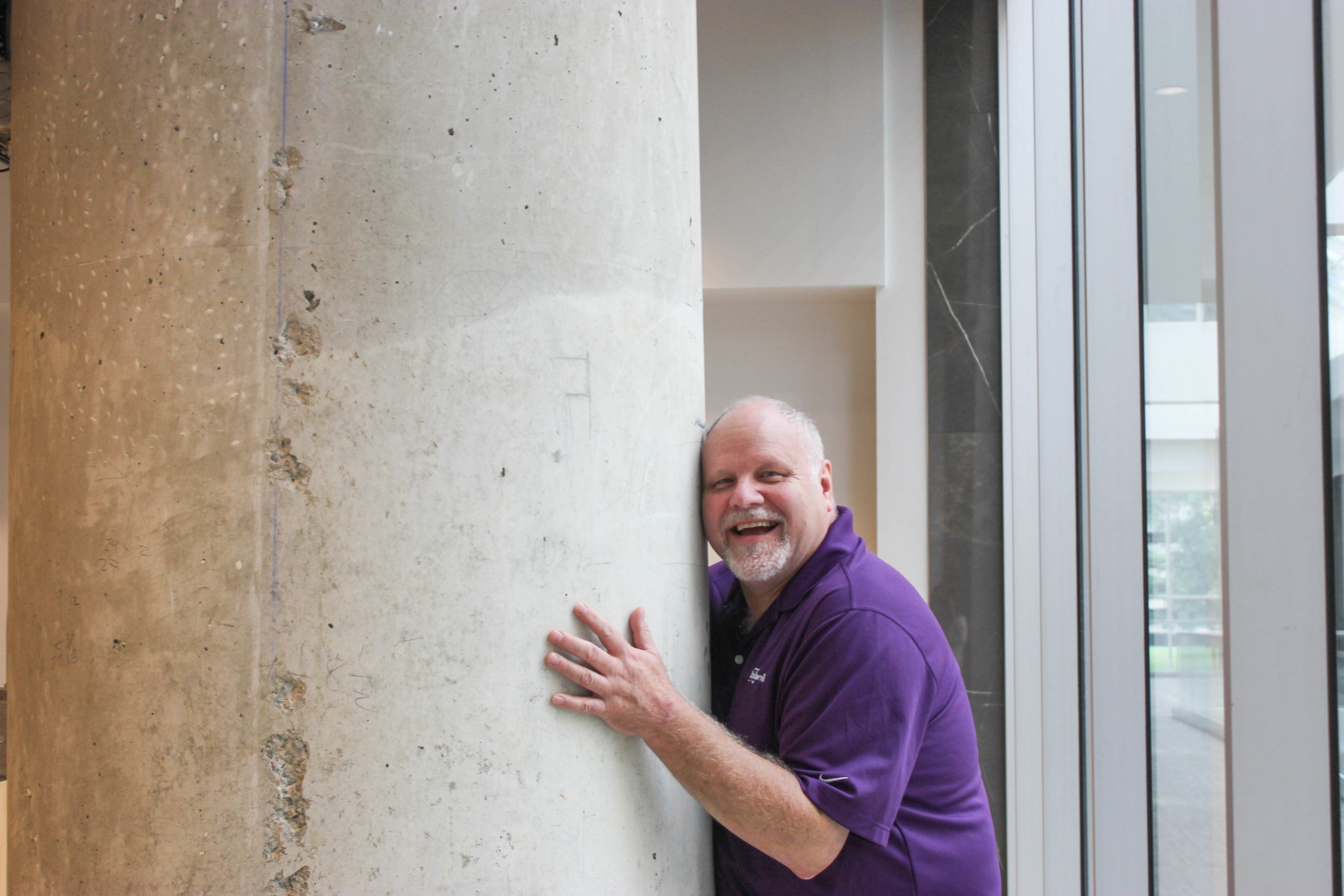Ever dream of living in a castle? “That’d be charming,” says Zander Agnew, Baskervill’s resident Building Envelope and Roofing Specialist, “and many are still standing after all these years. But I’d hate to pay the heating bill!”
While architectural styles remain timeless, how we assess building efficiency is constantly evolving and changing. In the last twenty years, it’s become clear that commercial buildings, quite literally, suck. That is—they suck up a lot of energy. That revelation has prompted a new era of optimizing building efficiency, which is why no standards or regulations change more than building envelope code.
In the “old days,” as Zander describes them, buildings were basically designed like cardboard: filled with holes and seams for air to move back and forth. That means they had low R-Value, or amount of insulating power. The opposite end of the spectrum might be a Yeti© cooler: its incredibly high R-Value means your drinks will stay cool in any condition, with no leakage.
If you’re working with a castle, any moisture in that thick stone wall will dry out before things get bad. But in today’s world, you’re likely not working with a castle, so you need separate layers to build up that strong R-value and protect what’s inside from the conditions outside. Those layers are what make up the building’s “envelope.”
Picture a building—any building—and see if you can identify all the potential infiltration points. You probably thought of windows and doors, maybe the roof. But did you know that many building materials, like brick or stone, are porous to begin with? For this reason, brick, wood, and other exterior cladding types are usually placed on top of an insulating weather barrier. And insulation is critical! Buildings were insulated for years before building studs themselves were identified as the culprit for approximately 20% of a building’s energy loss. Now, we insulate around studs instead of just in-between them.
So how do you design or rehab a building that’s efficient, attractive, and budget-friendly? We asked Zander to walk us through the process on his latest project, The Fralin Museum of Art at the University of Virginia.

First, understand what you’re working with. Older buildings could have had multiple additions throughout the years, and those tie-ins could all be different. Historic methods of construction were sturdy, but not necessarily efficient. Zander will dive into original as-built drawings and examine all the little details, followed by a trip up to the roof—rain or shine—to cross-check what he’s learned.
The Fralin Museum of Art, opened in 1935 and housed in the Bayly Building, is home to nearly 14,000 objects collected throughout the years. Its architectural design echoes the classical style Thomas Jefferson’s University is known for. When Zander was called in to investigate why the museum temperatures were unstable, he knew that a solution seamlessly blending with the historic style was tantamount to the project’s success. Zander’s investigation revealed that the building’s envelope was basically non-existent. With unimpeded air and moisture, especially in Virginia’s seasonal weather, the many priceless objects housed in the museum were in danger of ruin. The roof needed replacing.
Next, communicate and over-communicate. Bringing an old building up to modern code is no small feat. When multiple parties are on site at different times, coordination can be tricky. Zander likes to design with the potential for human error in mind, creating back up in the design so that multiple errors could be made before there’s a structural issue. That might mean inserting barriers with different overlaps or introducing belt and suspender systems that allow plenty of margin. (There is such a thing as overdoing it, and Zander’s always cautious to balance budget with worthwhile investments that yield long-term results). As designers, when working with existing drawings, acknowledge that an inaccuracy from decades ago might still be an issue, or that site conditions could have changed. When working up new drawings, take time to detail the complicated pieces, like flashing alignment in unusual corners. Don’t leave it up to the players in the field to improvise on decisions that could have been solved in the drawings.
Communication with the client is just as crucial. Zander constantly goes between the client and contractor to verify that the choices made work for all parties. As the designer, Zander values staying informed and ready to explain every detail. At the Fralin Museum, when what started as a reroof project turned into a complex building envelope rehabilitation, Zander was in touch with the University every step of the way.

Third, keep an open mind. Technologies are always evolving, and new materials are appearing on the regular. It can be tempting to hold the “this is how we’ve always done it,” philosophy, but Zander is open to how new technologies may improve the outcome. While meeting code requirements is the baseline of design, it’s only the minimum. We always strive to look for better ways to bring value to clients. At UVA, many of their historic roofs use tern-coated steel. This material looks great, but weathers easily, which makes maintenance costly. Knowing that preserving the University’s legacy of architecture on the Bayly Building’s new roof meant matching the silver-gray finish, Zander went to work researching a new solution. When he found a high-end zinc-coated copper called Freedom Gray, he knew making the switch was the right move for UVA.
The result? A beautiful old building with brand new (copper) roofs, vapor barriers, and added R-Value that protects a priceless museum collection and matches the architectural heritage on University Grounds.
Still dreaming of living in that castle? Zander always kicks off a project with, “can this be done?” and “is this the best way to do it?” and if the answer is yes, he’s the man for the job.


